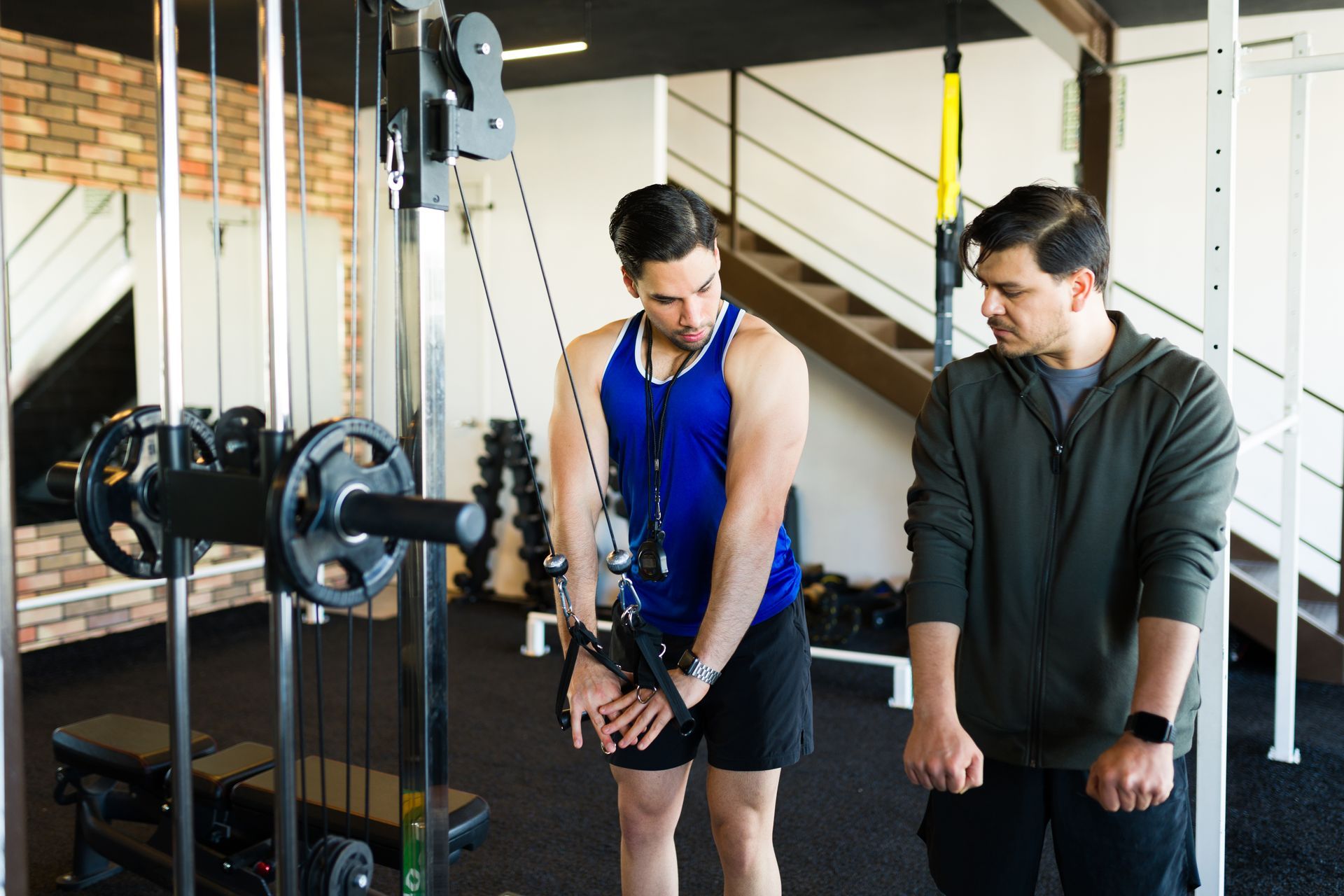December 4, 2023
Low-Grade Inflammation: Causes, Effects, and Personal Training Interventions in Nashville
Causes, Effects, and Interventions for Low Grade Inflammation
Inflammation is the body's natural response to injury, infection, or harmful stimuli. While acute inflammation can be beneficial for healing, chronic or low-grade inflammation, which can persist unnoticed for years, has garnered attention due to its association with various chronic diseases.
Hi! I’m Jim, a Nashville-based personal trainer, and in this article I will delve into the causes, effects on the body, and evidence-based interventions to combat low-grade inflammation. I will also highlight the role that personal training can play in managing this condition.
1. What is Low-Grade Inflammation?
Unlike acute inflammation, which is characterized by redness, heat, swelling, and pain at a localized site, low-grade inflammation is subtle and systemic. It involves a persistent but low-level activation of the immune system, often without any apparent external cause. This type of inflammation can be measured by the presence of specific biomarkers, such as C-reactive protein (CRP), in the blood.
2. Causes of Low-Grade Inflammation:
Here are several factors that contribute to chronic low-grade inflammation (and how personal training can help):
- Diet: As a personal trainer, I emphasize that diets high in refined sugars, trans fats, and processed foods can provoke inflammatory responses. Integrating a balanced diet has been crucial for my personal training clients here in the Nashville area, where cuisine diversity can challenge nutritional choices.
- Sedentary Lifestyle: Lack of regular physical activity is associated with increased inflammatory markers. Especially in dynamic environments like Nashville’s, getting involved in personal training can be a pivotal factor in promoting an active lifestyle.
- Chronic Stress: Prolonged stress can lead to an overactive immune response, triggering persistent inflammation. Personal training programs often include stress management techniques, essential in today's hectic world.
- Obesity: Fat tissue, especially around the abdomen, releases pro-inflammatory chemicals. Personal training can play a significant role in managing body weight and, consequently, inflammation levels.
- Gut Health: An imbalance in the gut microbiota can result in inflammation and increased intestinal permeability, sometimes referred to as "leaky gut." Personal trainers often collaborate with nutritionists to optimize gut health through diet.
- Environmental Factors: Pollution, exposure to toxins, and even prolonged use of certain medications can contribute. Although Nashville is a small city on the rise, we also enjoy many beautiful green spaces. Many of the personal trainers I know encourage outdoor activities to reduce such risks.
3. Effects on the Body:
Low-grade inflammation has far-reaching consequences on the body:
- Heart Disease: It contributes to the buildup of plaques in arteries, a process called atherosclerosis.
- Diabetes: Inflammation impairs insulin's ability to function, leading to increased blood sugar and type 2 diabetes.
- Neurodegenerative Diseases: Conditions like Alzheimer's and Parkinson's have been linked to inflammation.
- Mood Disorders: Research suggests a connection between inflammation and depression, anxiety, and other mood disorders.
- Joint Problems: Chronic inflammation can lead to conditions like osteoarthritis.
- Impaired Immune Function: Over time, persistent inflammation can weaken the immune system, making the body more susceptible to infections.
As a personal trainer, it’s important that I help my clients in Nashville understand these risks and work with them to mitigate these effects through targeted exercise and lifestyle choices.
4. Evidence-Based Interventions:
Combating low-grade inflammation involves lifestyle and dietary changes:
- Anti-Inflammatory Diet: Prioritize foods rich in omega-3 fatty acids, antioxidants, and fiber. This includes fatty fish, nuts, seeds, fruits, vegetables, and whole grains.
- Regular Exercise: Engaging in moderate exercise reduces inflammatory markers. This doesn't have to be intense—brisk walking is effective.
- Stress Management: Mindfulness practices, meditation, deep breathing exercises, and yoga can help manage and reduce stress.
- Healthy Weight: Achieving and maintaining a healthy weight can reduce the levels of pro-inflammatory substances released by fat cells.
- Probiotics and Prebiotics: To support gut health, consider foods or supplements that contain beneficial bacteria and the fibers that nourish them.
- Limit Alcohol and Tobacco: Both can induce inflammation, so moderation or avoidance is recommended.
- Medication: In some cases, medications like non-steroidal anti-inflammatory drugs (NSAIDs) or specific dietary supplements might be prescribed to address inflammation.
As you can see, combating low-grade inflammation involves lifestyle and dietary changes, areas where personal training shines. Regular exercise, stress management, and a healthy diet are key components of an effective personal training program. In Nashville, we're fortunate to have access to various resources that support these interventions.
Conclusion:
Low-grade inflammation is a silent but significant factor that underlies many chronic health issues. Recognizing its causes and understanding its impact on the body can inform better lifestyle and dietary choices. As a personal trainer in Nashville, I'm committed to helping clients reduce inflammation and improve their overall health. By taking proactive steps to reduce inflammation, we can pave the way for improved overall health and a decreased risk of many chronic diseases. As always, individualized medical advice from a healthcare professional is essential.





